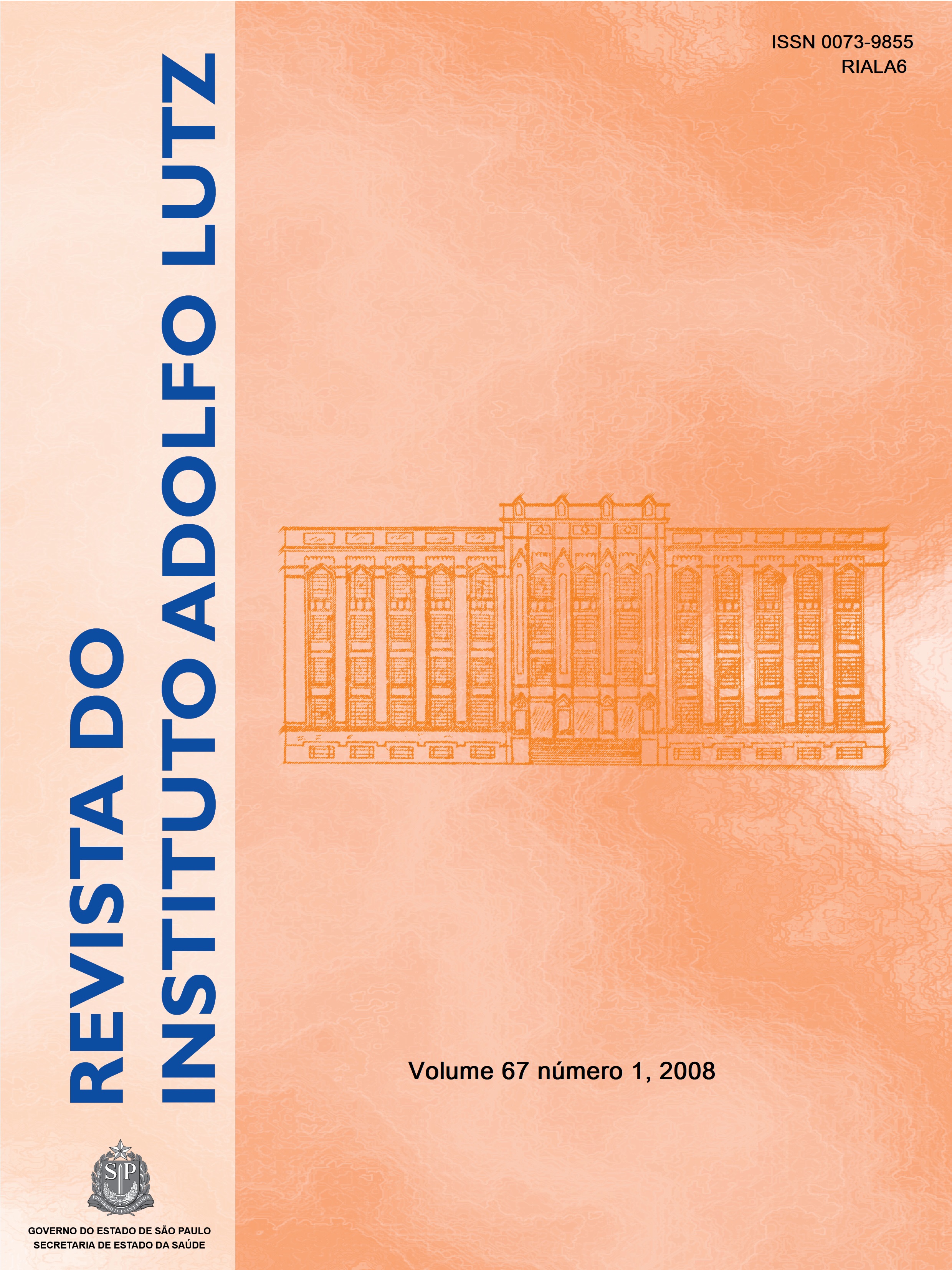Resumo
No estado de São Paulo, Brasil, em função da eficiente estratégia para a vigilância do vírus do sarampo (VS), não houve registro de casos nativos de sarampo no período de 2001 a 2007. No estado de São Paulo foram registrados casos de sarampo importados, sendo 01 paciente em 2001, outro em 2002 e em 2005 foi alvo de investigação uma criança não vacinada, de 18 meses de idade com exantema e febre, que foi admitida em hospital privado. O Centro de Vigilância Epidemiológica descobriu que o irmão desta criança teve uma doença semelhante uma semana antes. A infecção pelo vírus do sarampo foi confirmada no Instituto Adolfo Lutz pela detecção de anticorpo IgM anti-VS, isolamento do vírus por meio de cultivo em células Vero/hSLAM e amplificação de RNA viral por RT-PCR. A região do gene da nucleoproteína do vírus isolado foi amplificada. O resultado da análise filogênica mostrou que o vírus isolado correspondeu ao genótipo D5. Este genótipo circula no continente da Ásia e há relatos sobre sua anterior circulação em São Paulo.Referências
1. Dietz V, Rota J, Izurieta H, Carrasco P, Bellini W. Laboratoryconfirmation of suspected measles in settings of low measles transmission: conclusions from the experience in theAmericas. Bull World Health Organiz 2004; 82:11.
2. Muller CP, Kremer JR, Best JM, Dourado I, Triki H, Reef S etal. Reducing global disease burden of measles and rubella:Figure 1. Phylogenetic analysis of 243nt of nucleoprotein geneof Measles Virus (MV) isolates circulating in São Paulo, Brazil.MV clustered in eigth genotypes: A, C2, D3, D4, D5, D6, D8,H1. Numbers refer to strains in Table 1. Report of the WHO steering Committee on research relatedto measles and rubella vaccines and vaccination, 2005.Vaccine 2007; 25: 1-9.
3. Gioula G, Papa A, Exindari M, Melidou A, Chatzidimitriou D, Karabaxoglou D et al. Greek measles epidemic strain, 2005-2006. Epidemiol Infect 2006; 12: 1-4.
4. Siedler A, Tischer A, Mankertz A, Santibanez S. Twooutbreaks of measles in Germny 2005. Euro surveillance 2006; 11: 131-4.
5. Chironna M, Prato R, Sallustio A, Martinelli D, Germinario C, Lopalco P et al. Genetic characterization of measles virusstrains isolated during an epidemic cluster in Puglia, Italy 2006-2007. Virol J 2007; 21: 4:90.
6. Mulders MN, Truong AT, Muller CP. Monitoring of measles elimination using molecular epidemiology. Vaccine 2001; 19:2245-9.
7. Rota PA, Liffick SL, Rota JS, Redd S, Papania M, Bellini WJ. Molecular epidemiology of measles viruses in the UnitedStates, 1997-2001. Emerg Infec Dis 2002; 8: 902-8.
8. World Health Organization. Weekly Epidemiol Record. Global distribution of measles and rubella genotypes update. 2006;81:474-9.
9. Riddell MA, Rota JS, Rota PA. Review of the temporal andgeographical distribution of measles virus genotype in theprevaccine and postvaccine eras. Virol J 2005; 87: 1-9.
10. Barros AFR, Segatto TC, Luna E, Darnovaro-Holliday MC,Vicari A et al. Measles transmission during commercial airtravel in Brazil. J Clin Virol 2006; 36: 235-6.
11. Ono N, Tatsuo H, Hidaka Y, Aoki T, Minagawa H, Yanagi Y.Measles viruses on throat swabs from measles patients usesignaling lymphocytic activation molecule (CDw150) but not CD46 as a cellular receptor. J Virol 2001; 75: 4399-401.
12. Ronveaux O, Rickert D, Hadler S, Groom H, Lloyd J, Bchir Aet al. The immunization data quality audit: verifying thequality and consistency of immunization monitoring systems. Bull World Health Organ 2005; 83: 503-10.
13. Liffick S, Thoung N, Xu W, Li Y, Lien HP, Bellini WJ, Rota PA.Genetic characterization of contemporary wild-type measles viruses from Vietnam and the people ́s Pepublic of Chine: identification of two genotypes within clade H1. Virus Res2001; 77: 81-7.
14. Prevots DR, Parise MS, Segatto CV, Siqueira MM, Santos ED, Ganter B et al. Interruption of measles transmission in Brazil, 2000-2001. J Infect Dis 2003; 187: S111-20.
15. Oliveira MI, Curti SP, Figueiredo CA, Afonso AMS, Sallum MAM, Durigon EL. Molecular analysis of a measles virusisolate from Brazil: a case originating in Japan. Acta Virol2004; 48: 9-14.

Este trabalho está licenciado sob uma licença Creative Commons Attribution 4.0 International License.
Copyright (c) 2008 Maria Isabel de Oliveira, Ana Maria Sardinha Afonso, Cristina Adelaide Figueiredo, Ana Lucia Frugis Yu, Suely Pires Curti
